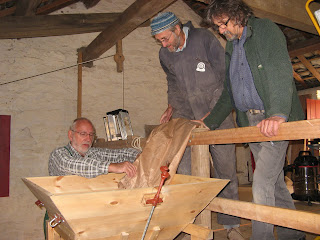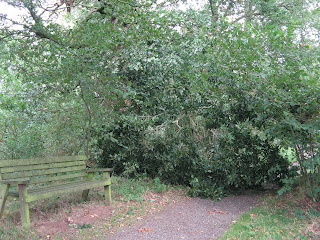
For the last couple of weeks the weather has been poor, and Ray has decided that crossing the Pennines in possible heavy snow would not be a good idea. It has therefore been left to Richard and me (Bob) to finish off the launder end. We did this even though it involved cutting wood, a job we usually leave to Ray.
Today we cut the last 4 or 5 pieces, including the boards that extend the base of the launder, and the angled side panels.
The finished job can be seen in this photo - the boards of the wheel can just be seen through the gap where the water is supposed to fall through. The gap leads to a short rectangular tube that is wider than it looks, but is angled back towards the launder to deflect the momentum of the water.
We tested the wheel rotation, and found that one of the new boards just touches one or two ofthe buckets, so we will have to take that out and plane it down a bit - another job for Ray!



















































